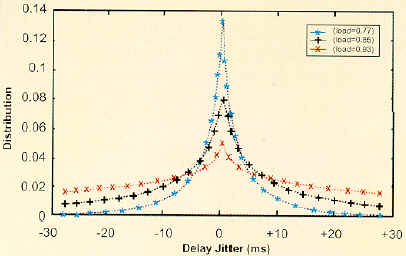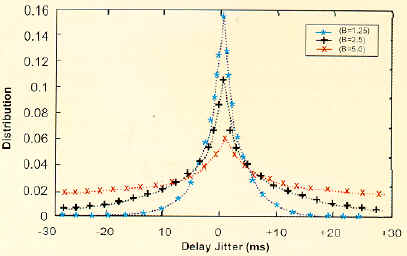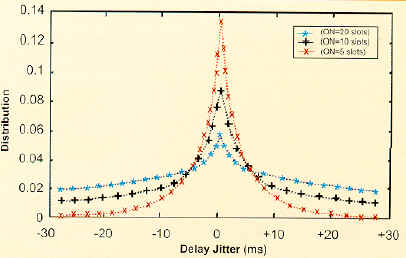Network Delay and
Delay Jitter on VoIP
Investigators:
Zheng
Li and Zhang Liren
NTRC Broadband Network Project
Voice over IP (VoIP) refers to real-time delivery of voice packets across networks using the Internet protocol. VoIP networks connection usually includes LANs, WANs, the Internet, the PSTN, the Integrated Services Digital Network (ISDN) and wireless networks. Figure 1 is an example of VoIP networking architecture. The appeal of voice over IP is based on the capability to facilitate voice and data convergence at application layer. Voice over IP technique is becoming more and more attractive for business communications to slash in prices for long distance calls by using the Internet backbone and bypassing the Public Switched Telephone Networks (PSTN) toll services.
Delay and delay jitter are the important measures of QoS particularly for the voice traffic in the network environment with bursty background traffic. This paper studies the performance behavior of delay and delay jitter at the IP packet level by using the transient queuing solution. The analysis focuses on the voice over IP traffic going through an IP router with the bursty background traffic over network. The numerical results based on the real-life voice clips are presented in terms of probability density functions of delay and delay jitter to demonstrate the effects of delay and delay jitter on speech clips. From Figs. 2, 3 and 4, it can be seen that network conditions including traffic load, traffic burstiness and burst-length all have significant effects on the probability density function of delay and delay jitters. A sequence of negative jitter (clustering) may result in downstream nodal congestion and consecutive packet loss. On the other hand, a sequence of positive jitters (dispersion) may result in consecutive packet significant delays. A large sequence of either clustered or dispersed packets have significant effects on the performance of QoS for VoIP traffic.

Figure 1. VoIP Infrastructure

Figure 2. PDF of Delay Jitter at Different Traffic Load

Figure 3. PDF of Delay Jitter at Different Traffic Burstiness

Figure 4. PDF of Delay Jitter at Different Traffic Burst Length
Home | Site Map |
Feedback |
About
© 2002 All Rights Reserved
NTRC